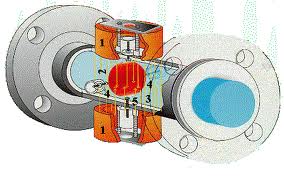What is a Magnetic Flow Meter?
A magnetic flow meter is usually referred to as an ‘electromag’ or ‘mag meter’ which utilizes a magnetic field built into the metering tube. It results in a probable difference proportional to the flow velocity vertical to flux lines. It requires a conducting fluid, for instance, water containing ions, and an electrical insulating pipe surface like a rubber-lined steel tube.
Generally, an electrochemically charged fluid makes the possible difference drift up and down as the meter examines the fluid flow for the induced potential difference. In order to mitigate this, it is important that the magnetic field get reversed constantly, wiping out the difference of static potential. This blocks the use of permanent magnets for the magnetic flow meter.
Principle of Operation
The operation of magnetic flow meters is dependent on Faraday's Law. Faraday's Law states that the voltage induced around any conductor while moving at the right angles via a magnetic field, which is proportional to the velocity of the conductor.
E is proportional to V x B x D where:
E = Voltage generated in a conductor
V = Velocity of the conductor
B = Magnetic field strength
D = Length of the conductor
In order to apply the principle of flow with magnetic flow meters, it is important to first measure the fluid which should be electrically conductive for Faraday’s principle. A right approach can be useful for using Faraday’s principle and get the desired outcome.
ProFlow Dynamics Supplies of Flow Meters


No comments:
Post a Comment